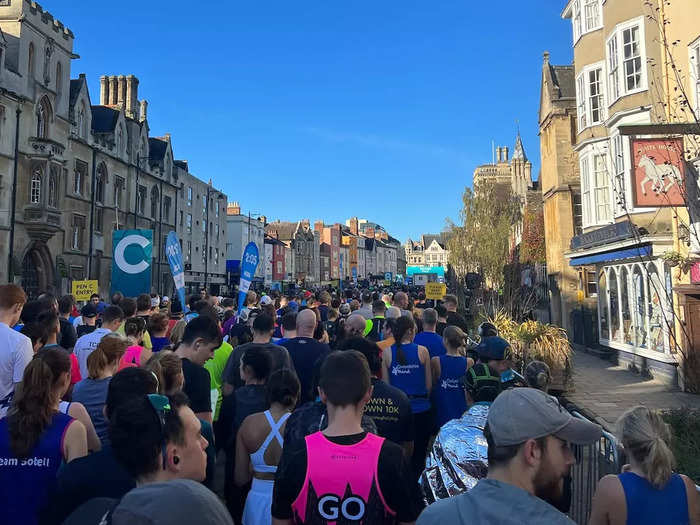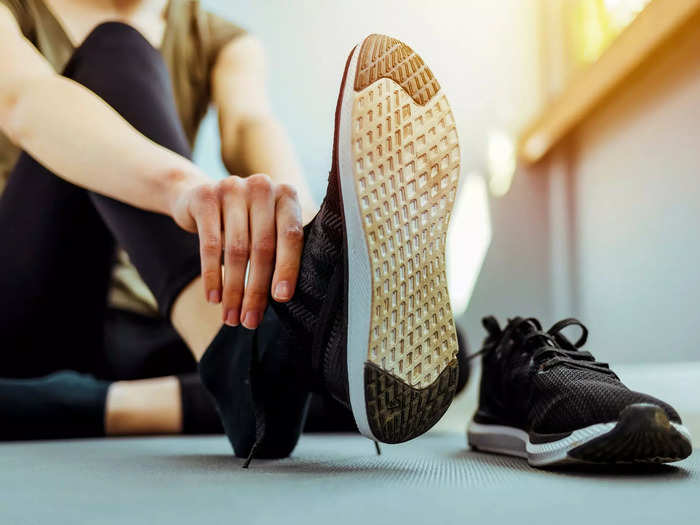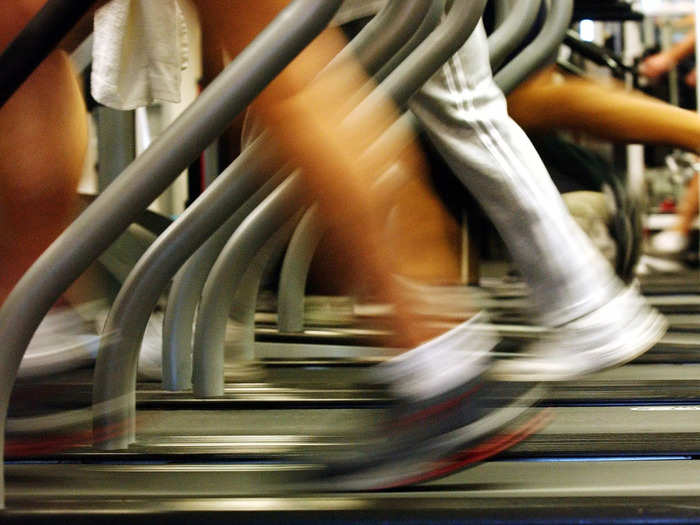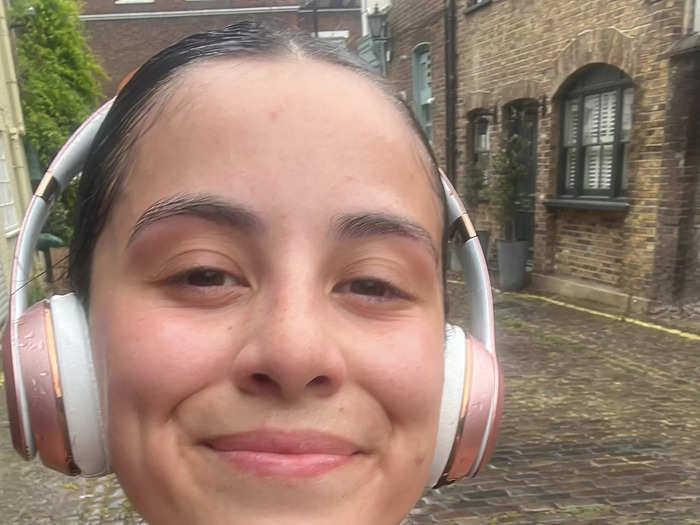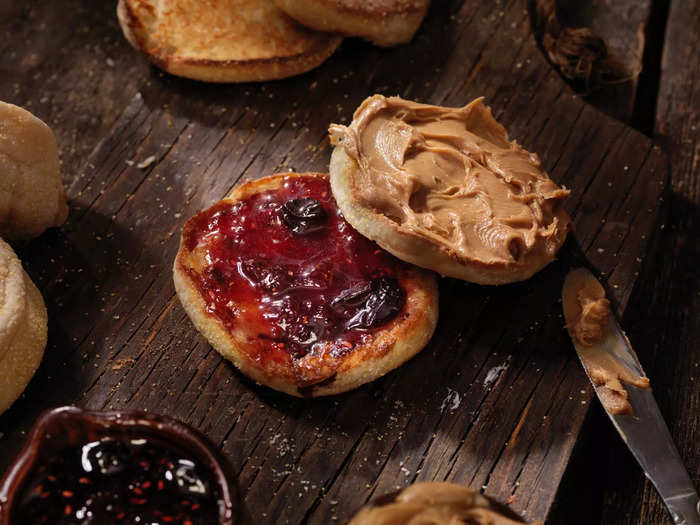The author ran her first half-marathon alongside 13,000 other runners in Oxford, UK.Maria Noyen/Insider
- In early October, I ran my first half-marathon after 12 weeks of training.
- It was tough, but I learned a lot about what to do and what to avoid when preparing for a big race.
It's no secret: I wasn't exactly looking forward to my first half-marathon.
A week before the race in early October, I found out my best friend, who had signed up for the annual run in Oxford with me, needed to pull out due to work. The night before the race, I tossed and turned knowing that the challenge was no longer months or weeks ahead, but mere hours.
But on the morning of October 15, I joined more than 13,000 other people to run just over 13 miles. It was the first time I'd gone that distance. When I crossed the finish line, breathless and drenched in sweat, the reality sunk in — the race I'd spent 12 weeks training for was over. And I managed it in just over two hours, which was exactly what I'd been aiming for.
While I still think everyone should think twice before signing up for a long-distance race, I'm surprised to say I wouldn't rule out doing one again. That said, if I do, I'd keep in mind a few mistakes I made during training and the race itself as well as a couple of things I'm glad I did to set myself up for success.
Running alongside people during the half-marathon pushed me to go faster. It made me wish I'd joined a running club before the race.
The author ran alongside over 13,000 runners. Maria Noyen/Insider
I signed up for my race with a few friends, some of whom were forced to drop out before the big day due to travel or work commitments.
During my training, however, I was able to meet up with a couple of them a few times for runs, which made running longer distances less tedious.
But I didn't fully appreciate what it was like to run with a bigger group until the day of the half-marathon. The energy of the crowd and seeing other people push themselves through each mile encouraged me to run faster than I'd ever had before, which in turn made me regret not looking into running groups or clubs during my own training.
If I ever sign up for a long-distance race again, finding a community of people to train with would be the first thing I'd look into.
When it came to equipment, I definitely should've avoided wearing over-ear headphones for the race, as there were times they made me feel uncomfortably hot and sweaty.
Wearing over-ear headphones isn't ideal during a long-distance race, the author found. Maria Noyen/Insider
I own two styles of headphones: chunky over-ear Beats and wired Apple headphones. Before the race, I'd toyed with the idea of borrowing a pair of wireless earbuds from a friend or family member but decided against it because I didn't want to change the equipment I'd used throughout my training on the big day.
Neither of the options I had were ideal, but in the end, I opted for the Beats since the wires of the Apple headphones bothered me at times during my training runs.
While I managed OK with the Beats, I'd invest in a pair of wireless earbuds for any future long-distance running. I found myself getting distracted by how hot my ears were at mile 6, and an unpleasant smell lingered on the material of the headphones after the race, likely from all the sweat.
I did some strength training the week of my race, which was a big rookie mistake.
Lifting weights the week of a race isn't ideal if it isn't part of your regular routine. Maria Noyen/Insider
One of my biggest regrets was deciding to do strength training four days before the race. If I'd done my research, I would've seen how many running magazines, like Runners Connect and Runtastic, advise skipping strength training or exercises that might be unfamiliar the week of a half-marathon to conserve energy and avoid injuries.
During the 12 weeks I spent preparing, I found it difficult to balance my half-marathon training plan with other forms of exercise. So when I saw that my plan tapered down significantly in the last two weeks, I naively thought I could use that as an opportunity to hit the gym.
The day after my gym visit, I knew I'd made a mistake. I woke up incredibly sore and stiff, which meant that I had to push the last run I had on my training plan until two days before my race.
Through repeated stretching over a few days, I finally felt the tightness in my muscles ease the day before my race, so luckily it didn't really affect my performance, but the stress that trip to the gym caused was not worth it.
While I did make mistakes in my training, there are also a few choices I'm glad I made before the race, like investing in a pair of running socks.
Running socks help cushion feet and prevent blisters. ljubaphoto/Getty Images
Before starting my 12-week training plan, the farthest distance I'd ever run was 5 miles, and I had rarely experienced blisters.
But as soon as my training started requiring that I go on longer runs each week, which ranged from 4.9 to 11.2 miles, I noticed that the frequency and severity of the blisters I got increased significantly. After complaining to my mom, who ran the New York marathon in 2006, she told me to look into running socks that are specifically designed to cushion feet, wick away sweat, and, most importantly in my case, prevent blisters.
I ended up buying three pairs of Balega Hidden Comfort Running Socks, which cost around $14 each on Amazon, and quickly realized that not all socks are made the same. My blister issue went away within the first week I started wearing them.
And even better, after my race, I was amazed to see that I only had one tiny blister after completing 13 miles.
I also set myself up for success by visiting a running store early on in my training.
Staff at running stores can help people pick the right shoes for themselves and the type of race they've signed up for. Spencer Platt/Getty Images
Early into my training, I knew that my four-year-old, tattered pair of Nike running shoes weren't going to cut it for a 13-mile race.
So not only did I decide to invest in a new pair of shoes, but I went a step further by visiting a professional running shop recommended by a friend. At the store, staff used gait analysis systems to examine how I landed on my feet and if I had any misalignments while I ran on a treadmill. From there, they provided specific advice on what shoes I should use for the race.
They also gave me a few useful running tips. They told me to be careful with my left ankle because I tend to roll it and to try taking shorter strides to avoid "heel striking," which can cause knee and hip injuries.
In the end, I left with a pair of Asics shoes that, I'll be honest, weren't the coolest-looking sneakers I'd ever seen, but they were sturdy, comfortable, and helped me reach the finish line without injury.
Wearing a running vest and carrying my own water helped me save precious time during my race.
The author stores water bottles, energy gels, and her phone in her running vest. Maria Noyen/Insider
Although I wasn't aiming for a specific time for my first half-marathon, I was hoping I'd be able to complete it as close to the two-hour mark as I could. And one of the ways I was able to achieve that goal was by wearing a running vest, which cost around $40.
The vest was lightweight but came with several pockets where I was able to store my phone, water, and energy gels, a thick, gooey substance that runners consume for extra energy.
Storing water in my vest was especially handy because it meant I didn't have to waste any time stopping at drink stations, which were sometimes quite busy.
Eating a familiar meal in the morning cut down my chances of experiencing tummy troubles mid-run.
Three hours before the race, the author consumed a carb-heavy breakfast she'd previously eaten before runs. LauriPatterson/Insider
A big worry I'd had before my half-marathon was experiencing a sudden digestive system issue, which is pretty common in long-distance races. As Insider previously reported, studies have found that 30% to 65% of runners will have an abdominal complaint.
In 2018, for example, an avid runner named Tamara Torlakson ended up pooping her pants about halfway through a marathon to maintain her pace. "It just came out and I felt a lot better," Torlakson, then 31, recalled of her experience. "I didn't want one poop to mess it all up."
While I knew I wouldn't be alone if it happened, I set myself up for success by waking up early before my race and eating a carb-heavy breakfast that I was familiar with. I opted for a bagel topped with peanut butter and jam, which gave me all the energy I needed without causing any unexpected tummy trouble throughout the run.

